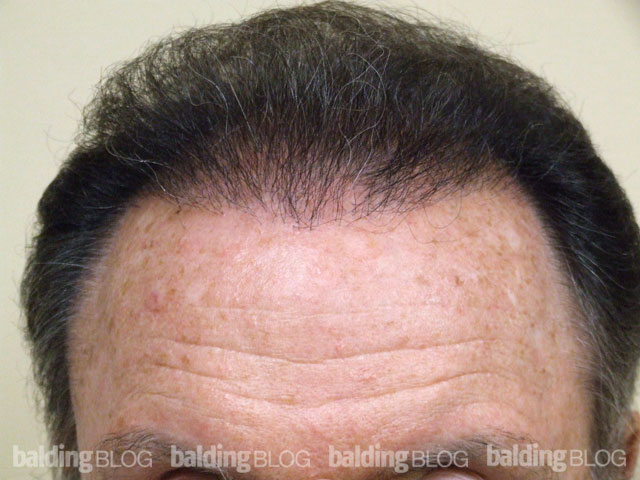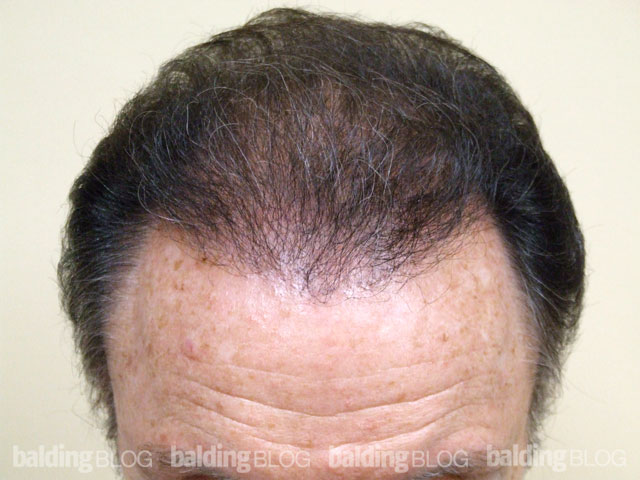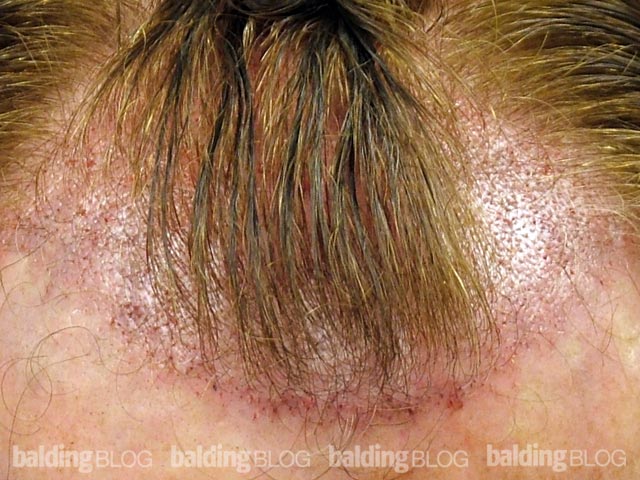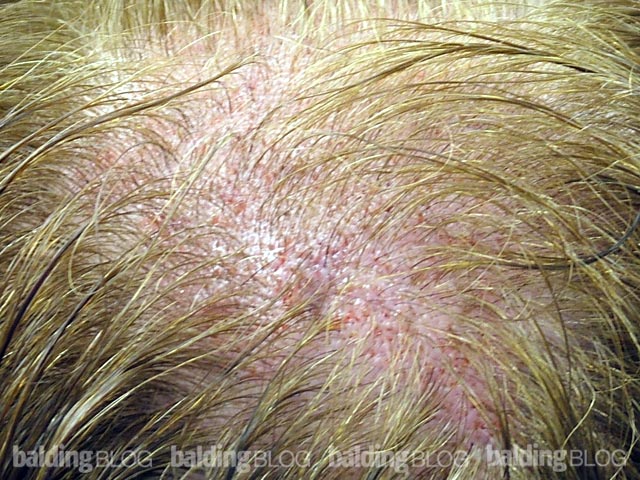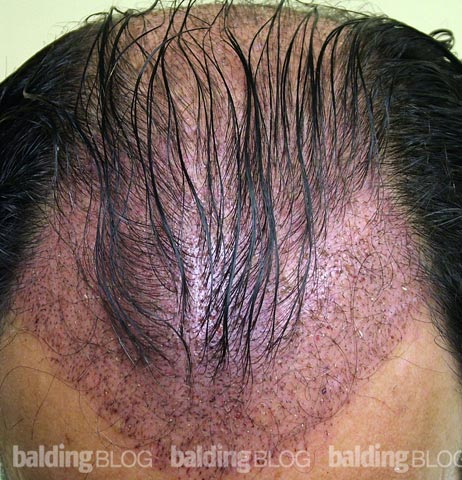What does a 3000 graft operation look like in a person with a Class 6 Norwood balding pattern, fine hair and moderate contrast between hair and skin color?

The below patient is in his late 60s and had one hair transplant procedure of 3,164 grafts. The grafts were placed to cover the entire balding area. In helping you understand the issues related to fullness, the area covered placed about 6000 hairs (in 3,164 grafts) in an area that originally had 50,000 hairs. That means that what you are looking at about 12% of his original hair density (before he went bald). Clearly, the math points out that a return to his original fullness is not possible. Many times people ask me how many grafts one needs to get a full head of hair. The answer to that question depends upon the thickness of the hair shaft, the character of the hair (straight or wavy), the color contrast between hair and skin color (the lower the contrast the better) and the size of the bald area being treated. I have placed 3000 grafts into an area 1/4 the size of this man’s bald area and the results were a much fuller appearance.
There is a general misconception in the hair restoration community that one can tackle a man with this degree of balding and replace the fullness to his original look in one session with as few as 1500 grafts. Many unethical doctors make that representation and I find it difficult to ‘compete’ with a doctor who promises a full head of hair with half the number of grafts I showed here (probably at half the price because of fewer numbers and salesmen that promote such misconceptions). I try to show how important it is for today’s buyer to understand just what he is buying and what he can expect. Be careful when a doctor shows you just a single view of a result, places the photo in a shadow, and does not really cover the entire transplanted area. That is the reason we have open house events monthly and have been doing them for 14 years. Visitors can see and interview patients, examining just what they are going to get without tricks of photography or slick salesmen to tell you what you might want to hear, true or not. With that said, the man shown below felt transformed in just the one procedure. He wanted a second session to increase the fullness further and after these pictures were taken, a second procedure of 3000 more grafts were done with a similar distribution, though it is far too early to show the results of that procedure. Please click each photo to enlarge.
The 1st set (below) are the before photos.

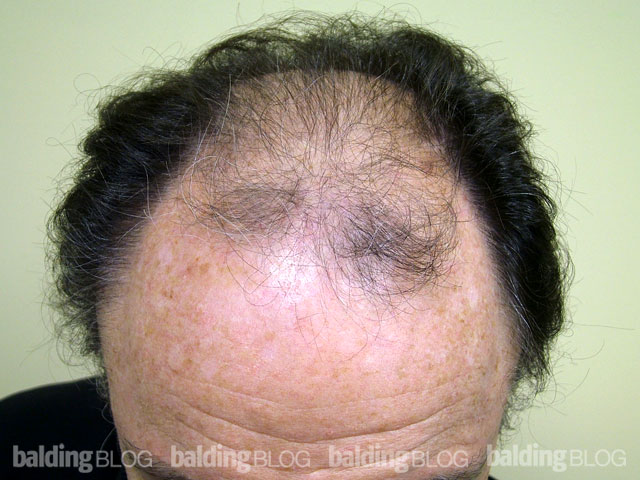
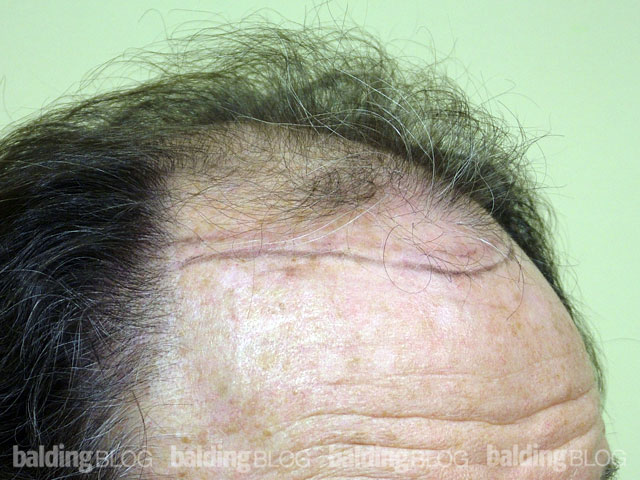
The 2nd set (below), are the after photos, taken 10 months after one procedure.
